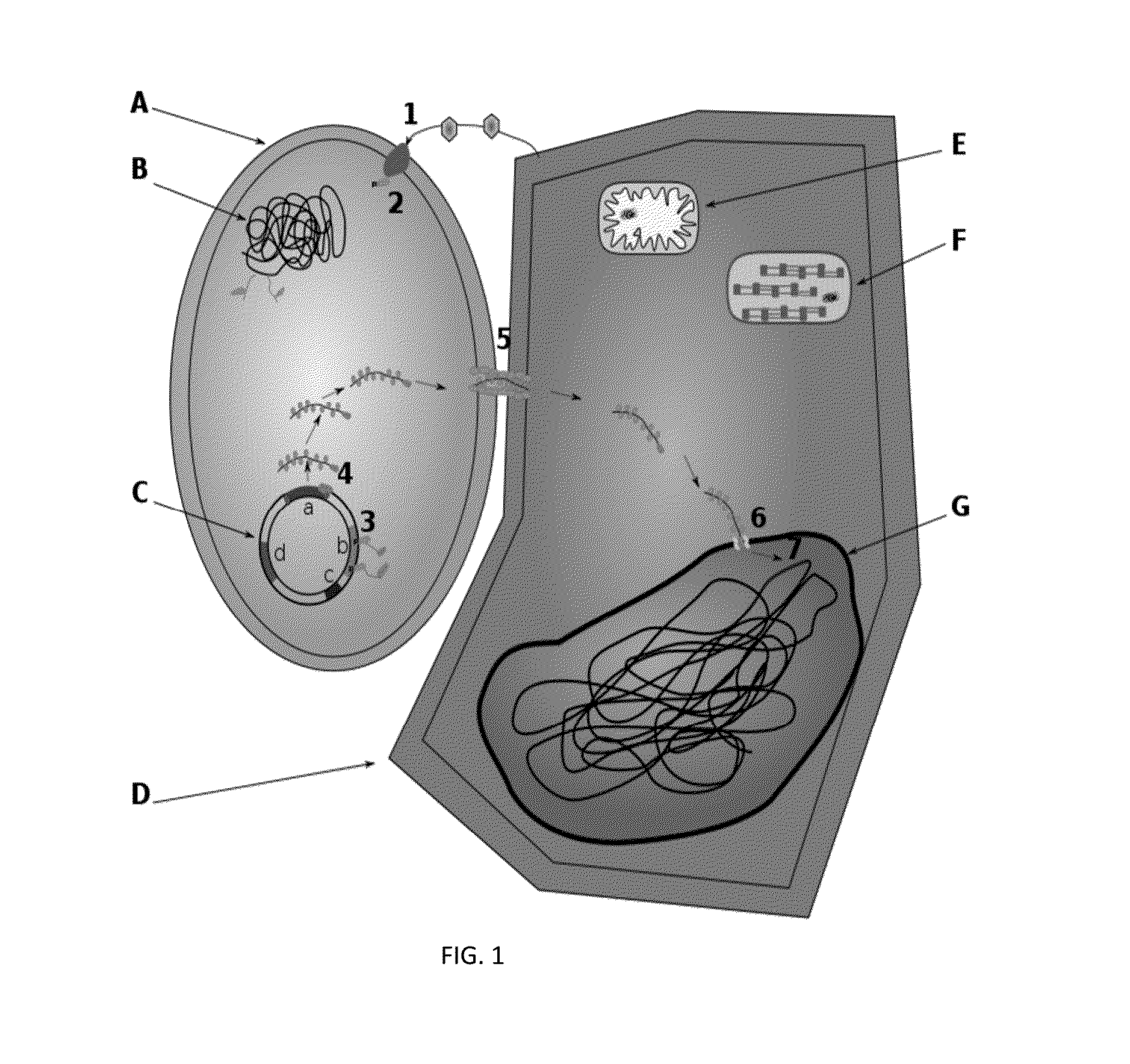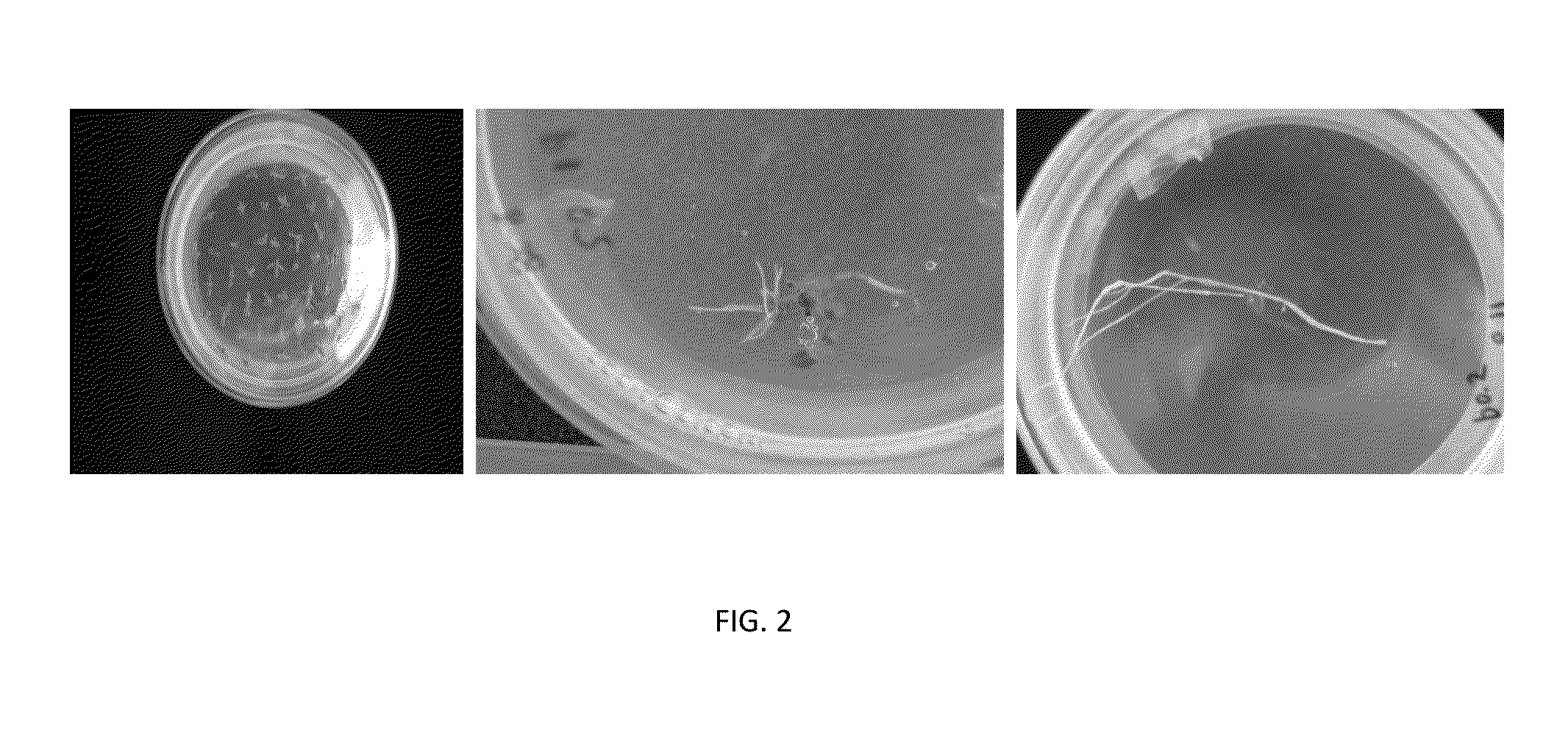Method for enhanced production of morinda metabolites
a morinda metabolite and enhanced technology, applied in the direction of peptide sources, drug compositions, transferases, etc., can solve the problems of adverse effects, increase the foraging and subsequent depletion of wild plants, etc., and achieve the effect of enhancing the production of secondary metabolites and high productivities
- Summary
- Abstract
- Description
- Claims
- Application Information
AI Technical Summary
Benefits of technology
Problems solved by technology
Method used
Image
Examples
example 1
Cloning of a Chalcone Synthase (CHS) cDNA and Vector Construction
[0045]Freshly collected red eucalyptus (Eucalyptus camaldulensis) leaves were frozen in liquid nitrogen and stored at −80 ° C. RNA was isolated with a RNA extraction kit (Clontech, Palo Alto, USA) according to manufacturer's instructions.
[0046]mRNA was purified from total RNA using a Magnosphere Ultrapure mRNA Purifition Kit (Clontech, Palo Alto, USA). cDNA was synthesized from mRNA using a cDNA synthesis kit from Clontech. Full length cDNA coding for chalcone synthase was amplified from the cDNA pool by PCR (polymerase chain reaction) using primers EcCHSF1 (ATGGTGAGCGTCGAGGAATT) (SEQ ID NO:3) and EcCHSR1 (TTAAGCAGACAGGGCGTGGA) (SEQ ID NO: 4). The resulting cDNA is created from mRNA, which does not include the genomic introns. The E. camaldulensis CHS gene comprises at least two exons with an intervening intron. The PCR conditions were as follows: 95 C for 10 min, then 30 cycles of 95 C for 30 s, 58 C for 30 s, 72 C fo...
example 2
Transformation of MO Using Agrobacterium rhizogenes
[0048]A. Micropropagation of Plantlets
[0049]Young shoots of MO were excised from adult plants, trimmed, and cut into 1-cm sections, washed with distilled water for 1 hour, 75% ethyl alcohol for 50 sec, and 0.1% mercurochrome for 10 min. The explants were then rinsed 3 times in distilled water, air-dried, and placed on ½ strength Murashige and Skoog (MS) medium supplemented with 300 mg / l Cefotaxime until aseptic culture was established. The decontaminated shoots were then cultured on solid medium containing ½ MS, IBA (2.0 mg / l), and sucrose (15%). After 2 months growth, the aseptic plantlets were trimmed of leaves and cut into 0.5-1.5 cm sections (FIG. 5A-E) and cultured on ½ MS medium for 3-5 days before transfecting with Agrobacterium rhizogenes.
[0050]B. Establishment of Hairy Root Clones
[0051]Agrobacterium rhizogenes ATCC 15834 transformed with pFM-CHS was grown in 10 ml YEB medium overnight at 28 C with shaking at 200 rpm to an...
example 3
HPLC Profile of Iridoid and Anthraquinones Extracted from Hairy Roots
[0057]Dried powdered roots (4 kg) and hairy roots (288 g) were extracted with methanol two times under reflux. The extract was then filtered and evaporated under reduced pressure. The concentrated extract was freeze-dried and resuspended in water prior to analysis or used in animal studies. The yield was 13.77% for native roots and 34.38% for hairy roots.
[0058]Methanolic extracts of various hairy root clones and native herb were analyzed by reverse phase HPLC to quantitate the levels of iridoids and anthraquinones on a C18 column. Purified monotropein and rubiadin-1-methyl ether were used to generate standard curves.
[0059]As shown in FIG. 9 A, the iridoid profile of extracts from transgenic hairy roots of MO is similar to the native plant but at higher concentrations. Both monotropein and deacetylasperulosidic acid peaks were prominently detected. Due to the drastic increase in concentrations of anthraquinones in h...
PUM
| Property | Measurement | Unit |
|---|---|---|
| temperature | aaaaa | aaaaa |
| wavelength | aaaaa | aaaaa |
| Column temperature | aaaaa | aaaaa |
Abstract
Description
Claims
Application Information
 Login to View More
Login to View More - R&D
- Intellectual Property
- Life Sciences
- Materials
- Tech Scout
- Unparalleled Data Quality
- Higher Quality Content
- 60% Fewer Hallucinations
Browse by: Latest US Patents, China's latest patents, Technical Efficacy Thesaurus, Application Domain, Technology Topic, Popular Technical Reports.
© 2025 PatSnap. All rights reserved.Legal|Privacy policy|Modern Slavery Act Transparency Statement|Sitemap|About US| Contact US: help@patsnap.com



